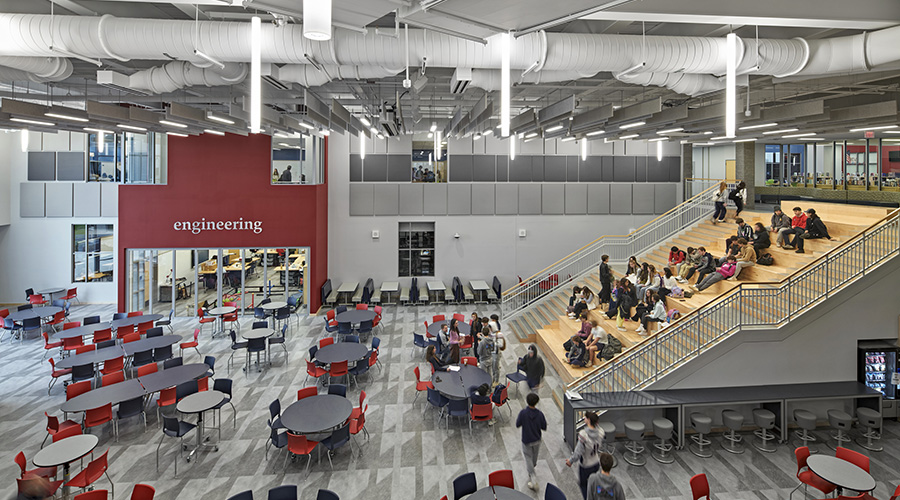Collaboration With Maintenance Staff Key to Eliminating Energy Waste
The goal is for behavioral changes to become habits, and that's how savings can be maintained permanently. At Gilbert Public Schools, Peterson and his team have devised a Saving Energy card that maintenance staff fills out each night. The card is basically a checklist to report things that were left on when classrooms are unoccupied, whether lights, computers or other appliances. Repeat offenders are notified of their energy-wasting transgressions. On a larger scale, Gilbert's assistant superintendent reviews electrical usage with each principal every month, and also periodically sends e-mails regarding new energy-saving ideas that emerge in Energy Management Task Force meetings.
From a facility operations standpoint, when the energy savings goals were still in their infancy, Peterson and his team set up a middle school as a guinea pig for energy saving measures. Many of these ideas were no-cost, like better control of temperatures with the school's energy management system, removing personal appliances like refrigerators and microwaves from classrooms, and changing temperatures during unoccupied times. With these measures, the school saved 41 percent on energy compared with the same period the previous year — a cost savings of nearly $7,500.
With that success in-hand, Peterson and his team rolled out the energy-saving strategies to facilities districtwide. Standards emerged, like a night temperature in schools of 85 during cooling season (most of the year in Arizona). They also increased the temperature set point and reduced footcandle output in hallways.
"A side benefit of this practice is that the classrooms actually feel much more comfortable after coming in from a warmer, darker hallway," says Peterson.
The biggest sticking point, though, was the mandate that teachers remove all appliances — like microwaves, coffee makers, space heaters and refrigerators — from classrooms. In some cases, compromises between principals, facility managers and teachers were reached that allowed appliances to be kept if they could find other ways to save energy.
"Elementary school teachers especially were really attached to their microwaves and refrigerators," says Peterson. "One of the challenges we faced was getting the message across to people that we needed to save energy. There was also the 'we've always done it this way' attitude we needed to overcome."
At Charlotte-Mecklenburg Schools, Chamberlain says he met similar resistance to the idea of eliminating appliances, but was also able to compromise. "Right now, Board of Education policy is that the use of appliances is under the purview of each principal," says Chamberlain. "For morale reasons, principals have not been messing with that policy."
But one way they'll try to whittle down appliance use is with a rebate and incentive program the school system plans to roll out this August. Each school facility will be graded on its participation in the district's environmental stewardship program. Each school will get points for environmentally preferable purchasing, recycling, and energy efficiency — including prevalence of appliances on the no-no list.
Those with better scores will receive money from a district pool with no strings attached. "We'll put the onus on the principals to convince the teachers to participate," says Chamberlain. "If they can do away with their appliances, they may get some extra money to spend however they want."
Chamberlain says they've changed the temperature set point as an energy-saving measure as well — 68 in the winter and 74 in the summer. They're also in the midst of an experimental $10 million energy performance contract for a few big-ticket item replacements. If successful, the district will definitely look into expanding the energy performance contract idea.
The district has also implemented a system whereby energy coordinators at each school are the main liaison between each school and the centralized facilities and operations department.
Related Topics:













